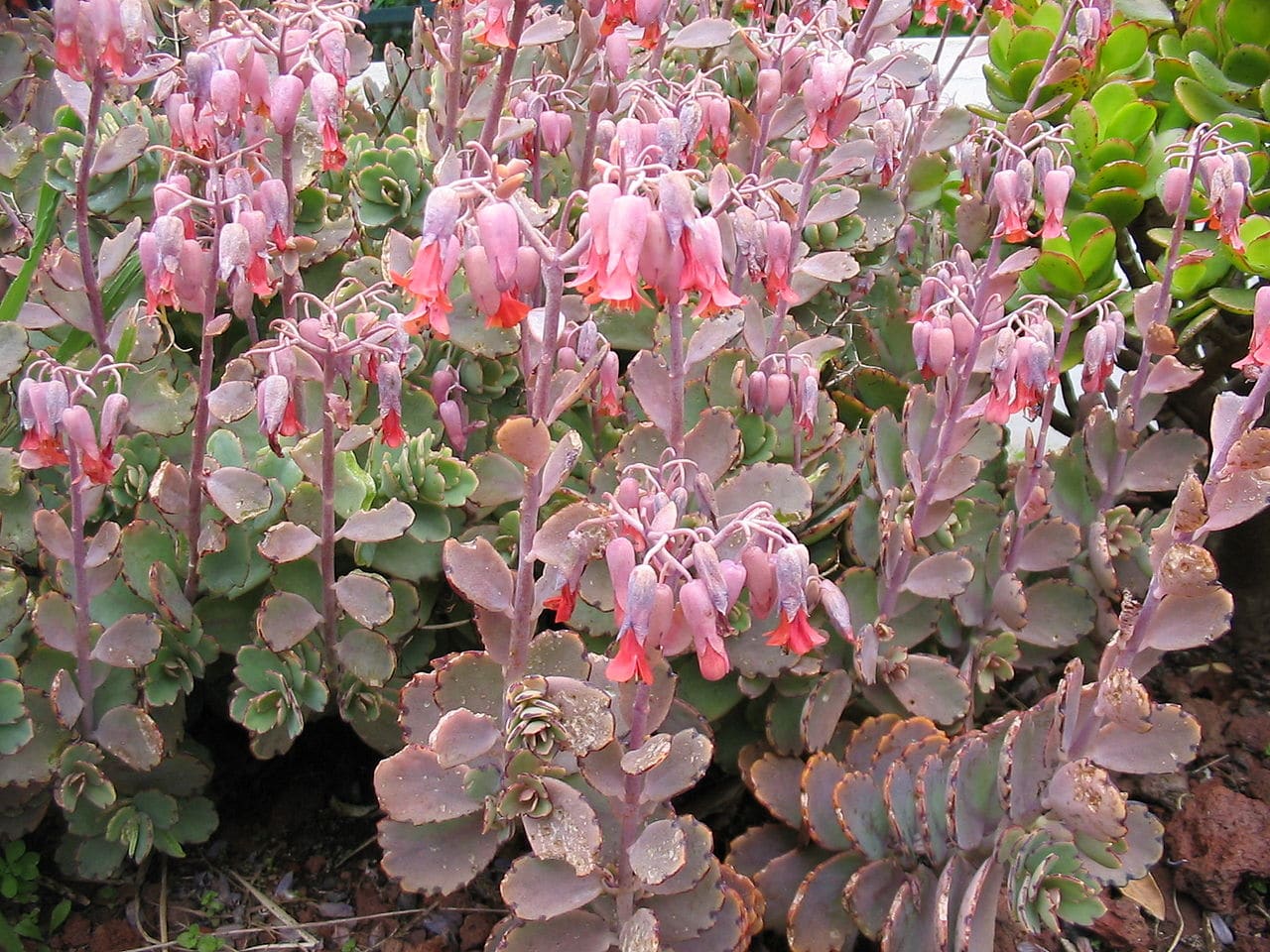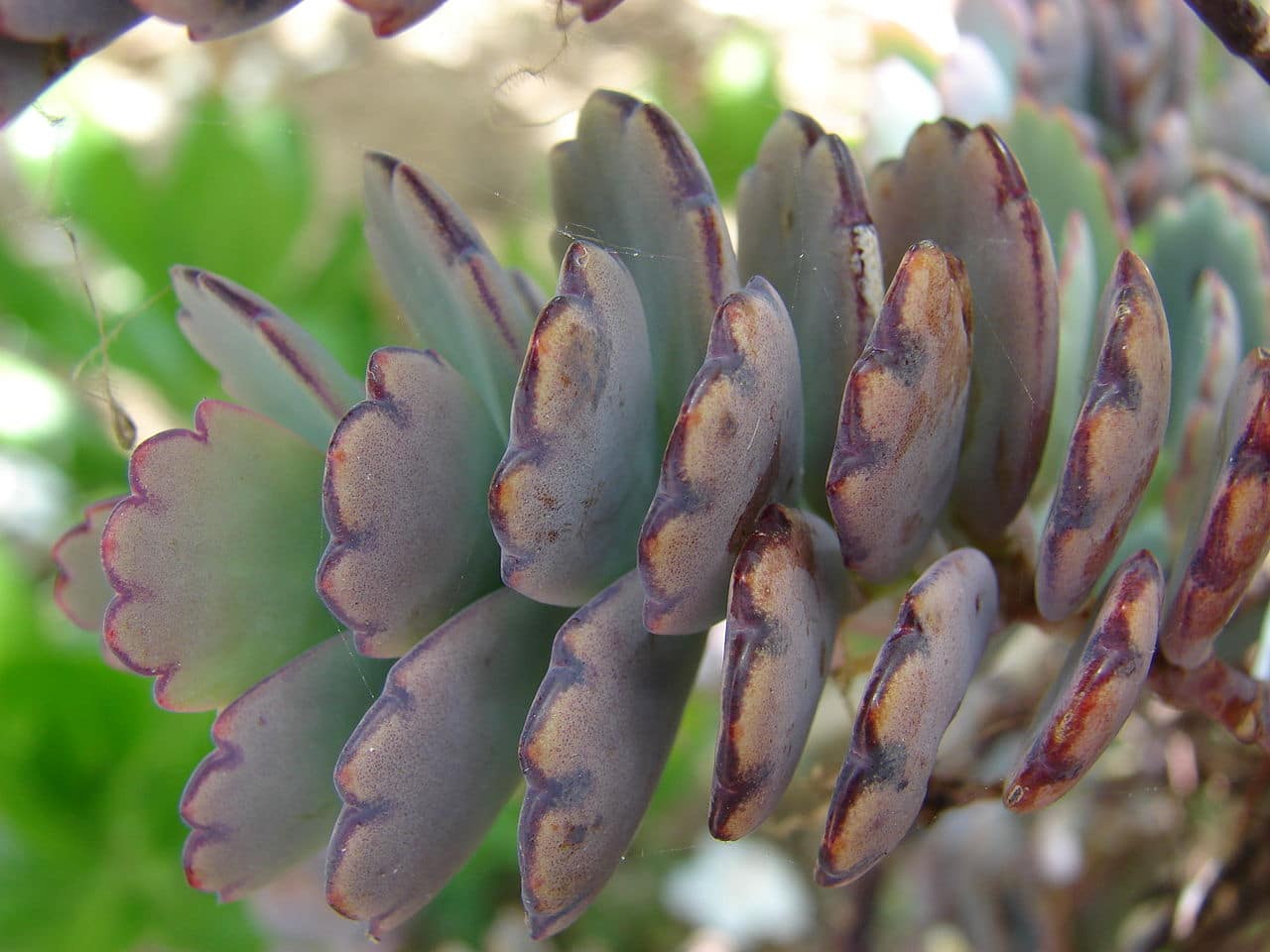
Image - Wikimedia / Ixitixel
El Kalanchoe fedtschenkoi It is a crass plant that, although it has a surname that is somewhat difficult to remember, it is really decorative. In fact, you can grow it both in a corner of the garden and in pots or planters, since its size is small and it does not need much space to grow.
Its maintenance is simple, as long as it is watered rather little and it is kept in an area where the sun shines directly. But let's see it in more detail below.
Origin and characteristics of Kalanchoe fedtschenkoi

Image - Wikimedia / Frank Vincentz
It is a crass or succulent non-cactus native to Madagascar that reaches a height of 30 to 80 centimeters. It develops round stems, from which simple, alternate, oval or obovate leaves sprout. These have a slightly serrated margin, and are blue-green or green-pink in color. It blooms in spring, producing inflorescences in corymbs. The flowers are tubular, hanging downwards, with the corolla of orange, coral or apricot color.
It has a fairly rapid growth, and if we add to this the ease with which it roots and its youngsters sprout, in case of growing it in a pot in a short time you will see that it occupies all of it 😉.
What are the care you need?
Get the Kalanchoe fedtschenkoi staying healthy is not complicated. It is a very grateful crass plant, which does not need to be very aware of it. But yes, there are certain measures that have to be taken so that you do not have problems or that, if they arise, you know how to react. Therefore, we recommend providing the following care:
Location
It is a succulent that It must be in a bright area, if possible outside, in full sun. However, it can also grow indoors if a lot of light enters the room from outside, and is placed away from drafts.
Earth

Image - Wikimedia / Forest & Kim Starr
- Flower pot: it has to be filled with mineral substrate, such as pomx or volcanic gravel (1-3mm thick). If you can't get it, mix equal parts universal substrate with perlite.
- Garden: the land must have excellent drainage, as it is a species that is very sensitive to overwatering. Therefore, if not, make a hole of about 40 x 40cm, cover its sides with a piece of shading mesh and finally fill it with mineral substrate. In this way, your plant will be able to grow well.
Irrigation
Being very sensitive to excess water, irrigation should be rather scarce. Always ensure that the soil or substrate dries completely before re-moistening it. Therefore, we recommend watering once or twice a week during the summer, and once every 7 or 10 days the rest of the year.
Of course, if you see that it is going to rain, you should space out the waterings more. Likewise, it is important that, if you are going to grow it in a pot, it has holes in the base so that any excess water can come out.
Subscriber
From the beginning of spring to the end of summer, it should be paid with some fertilizer for succulents, be it liquid (which will be ideal for plants grown in pots), granulated or powder (the latter two are more advisable for those that are planted in soil).
As the risk of overdose is high, especially if fertilizers are used, it is necessary to read and follow the instructions that are specified on the package.
Multiplication
The easiest and fastest way to get new copies of Kalanchoe fedtschenkoi is multiplying it by stem cuttings in spring or summer. To do this, you have to follow this step by step:
- First, cut with previously disinfected scissors a stem that you see is healthy, without signs of weakness.
- Then, fill a pot -with holes in its base- of about 6,5cm in diameter with pumice or universal substrate mixed with perlite in equal parts.
- Then water.
- Next, make a hole in the center of the pot, either a short stick or a finger for example.
- (OPTIONAL): you can impregnate the base of the cutting with rooting hormones.
- Finally, insert it in that hole, trying not to bury it too much. It will be enough that it is inserted about 2 centimeters, so that it remains well attached to the ground. However, if you have it on hand, you can cover the surface of the substrate with gravel (construction sand, 1-3mm thick).
It will grow its own roots in a week or two, but don't transplant it until you see the roots come out of the drainage holes or have taken up all of it.
Plagues and diseases

Image - Wikimedia / Ram-Man
Especially vulnerable to snails and slugs during the rainy season. Having fleshy leaves and stems, these animals devour it. To avoid this, it is important that repellants or products that keep them away, like beer in a glass or other container.
If we talk about diseases, they usually do not have, except when the environmental or substrate humidity is very high. When that happens, the fungi could end up weakening it. But if it is treated with fungicide and irrigation is suspended until the soil is completely dry again, it may be saved.
Rusticity
Does not resist frost. The cold tolerates it, but it is better to put it at home or in a greenhouse if the temperature drops below 10 degrees Celsius.
What did you think of the Kalanchoe fedtschenkoi?